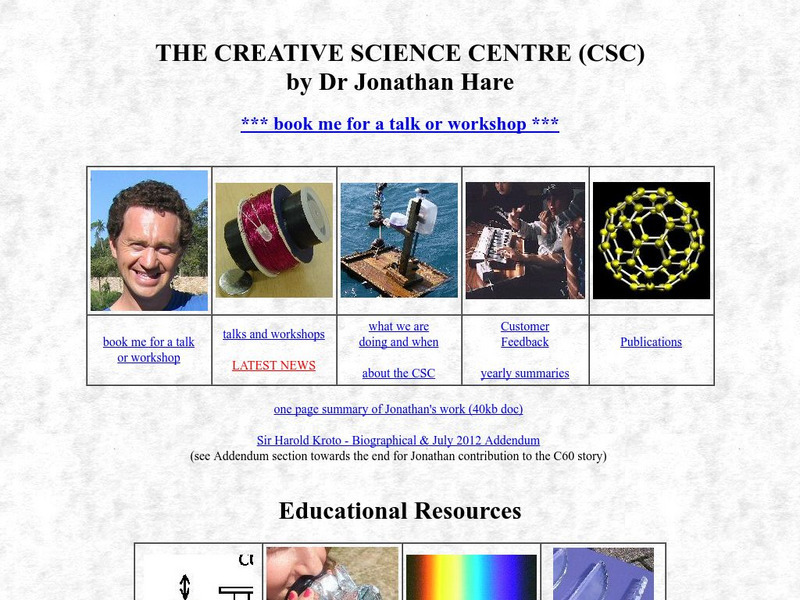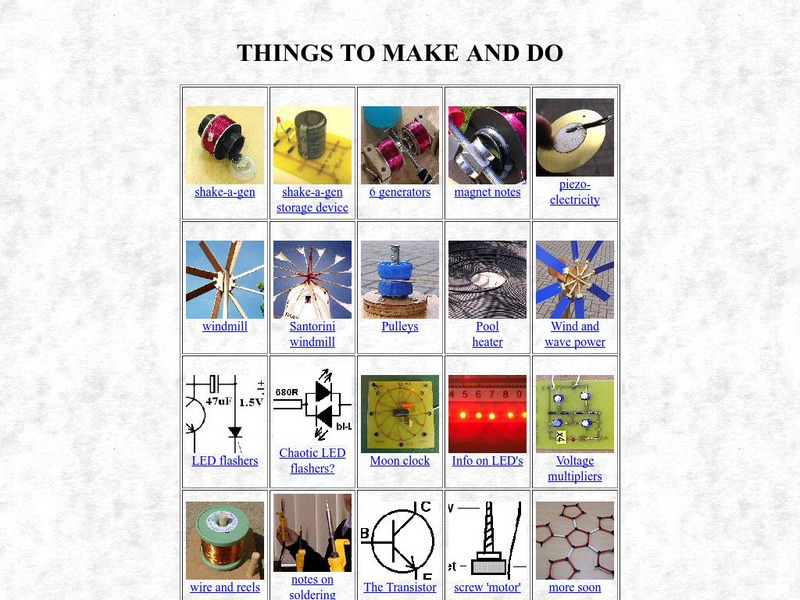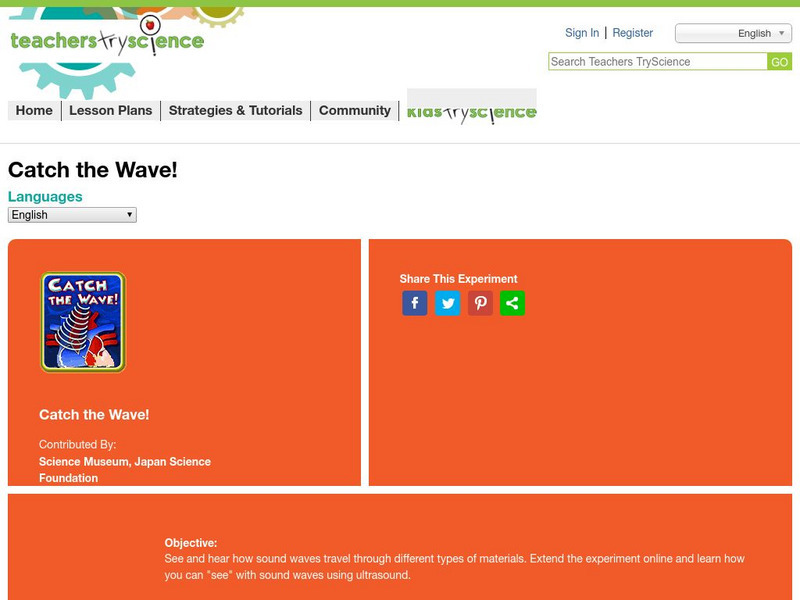Alabama Learning Exchange
Alex: Air Is All Around You
In this science lesson students will be asked the question, "Does air take up space?" and "Does air have weight?" Students will conduct experiments that prove that air has mass, takes up space, and exerts pressure.
Ministerio de Educación (Spain)
Ministerio De Educacion: La Materia
In this site you can learn and experiment with matter properties and change in behavior. Every theoretical explanation is accompanied by an animation. You will be able to aply the theory to real experiments.
Other
Science Fair Primer: Reporting the Results
A good explanation of the elements of a good science fair report written by a high school science teacher. Details are given step by step on stating the hypothesis, explaining the experimental procedure, presenting the data attained, and...
Other
The Science Spot: Science Classroom
A collection of activities for all areas of science exploration in the classroom.
Creative Science Centre
Creative Science Centre
This comprehensive resource has a collection of creative science ideas and challenges. The goal is to guide teachers and students toward developing more creative science projects.
Creative Science Centre
Creative Science Center: Things to Make and Do
Have you ever wanted to create your own science investigation? Try these creative science projects, and be inspired to design your own.
Optical Society
Optical Society of America: Optics for Kids: Make Money Appear Before Your Eyes
A simple experiment that clearly demonstrates how light bends when it passes through water. Accompanied by a good explanation of what's happening, and a link to an article on refraction.
Optical Society
Optical Society of America: Optics for Kids: Make a Green Gumball Black
An experiment to investigate what colors are seen when light is absorbed or reflected by colored gumballs. With links to scientific, academic articles that explain what is happening.
Optical Society
Optical Society of America: Optics for Kids: Lens Activity
An investigation into how lenses behave. Students explore using convex and concave lenses in various ways and record their observations. They are then are directed to another site to try activities where they can manipulate virtual lenses.
Science Bob Pflugfelder
Science Bob: Roll a Can With Static Electricity
Science Bob presents instructions for a science demonstration on how to roll a can with static electricity using common supplies with information on how it works.
PBS
Pbs Kids: Sci Girls
Girls share information about science projects they created, posting photos and descriptions about what they did and what they learned. Organized by science discipline.
Optical Society
Optical Society of America: Optics for Kids: Mirror, Mirror on the Wall
A simple experiment that clearly demonstrates angles of reflection when light hits a mirror. Accompanied by a good explanation of what's happening, and a link to an article on reflection.
Alabama Learning Exchange
Alex: From Weeds to Worms
The purpose of this lesson plan is to guide students in researching and discovering the importance of the interdependence of living and nonliving things in an ecosystem. Students utilize technology independently and cooperatively to...
PBS
Pbs Kids: Cartesian Diver
This PBS site shows users how they can make their own cartesian divers, discover how it works, and have some fun at the same time.
PBS
Pbs Kids: Colored Water Convection
This PBS site allows users to learn more about water convection as they discover how to demonstrate the way convection currents form. A fun science project!
Exploratorium
Exploratorium: Science Snacks: Fading Dot
An activity with an optical illusion that will have your eyes seeing it and then not seeing it! Learn the science behind what makes the dot on the page "disappear".
Teachers TryScience
Teachers Try Science: Catch the Wave!
A resource that explores sound waves and how they work. Offers activities online and offline. Requires Adobe Flash.
PBS
Pbs Kids: Dragonfly Tv: Do It: Amazing Air!
PBS site sets up an investigation that you can do at home to see the effects of invisible air.
PBS
Pbs Kids: Bernoulli's Blowout!
PBS site allows users to get a front row seat at a pushing contest between fast-moving and slow-moving air.
Exploratorium
Exploratorium: Science Snacks: Lateral Inhibition
An activity that will have you questioning which is in control, your eyes or your brain? This activity has students constructing simple paper tubes to investigate how the eyes work.
Exploratorium
Exploratorium: Science Snacks: Look Into Infinity
In this activity students will create images of images of images that can repeat forever. Students will recreate this effect by setting up two acrylic plastic mirrors.
Exploratorium
Exploratorium: Science Snacks: Looking a Little Spotty
By using digitally manipulated images, test your brain to see how much information is needed for your brain to produce an image.
Exploratorium
Exploratorium: Science Snacks: Magic Wand
In this activity you will be investigating where the picture of a movie or slideshow actually is. Is it in the air, screen, the eye of the viewer or in the film.
Other popular searches
- Life Science Experiments
- Egg Science Experiments
- Hands on Science Experiments
- Space Science Experiments
- Food Science Experiments
- 5 Minute Science Experiments
- Simple Science Experiments
- Air Science Experiments
- Fun Science Experiments
- Earth Science Experiments
- Science Experiments Units
- Sea Life Science Experiments


















